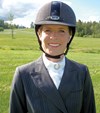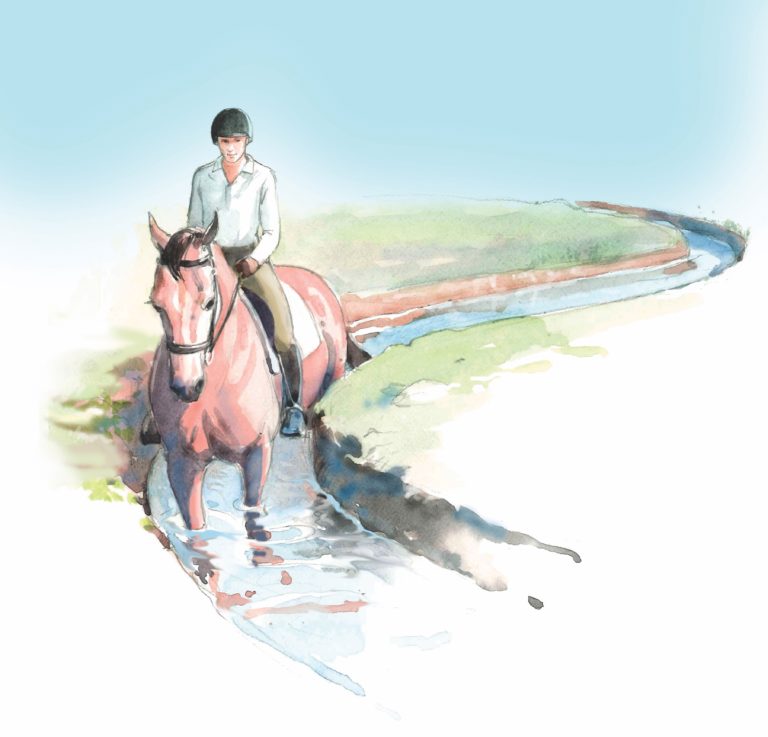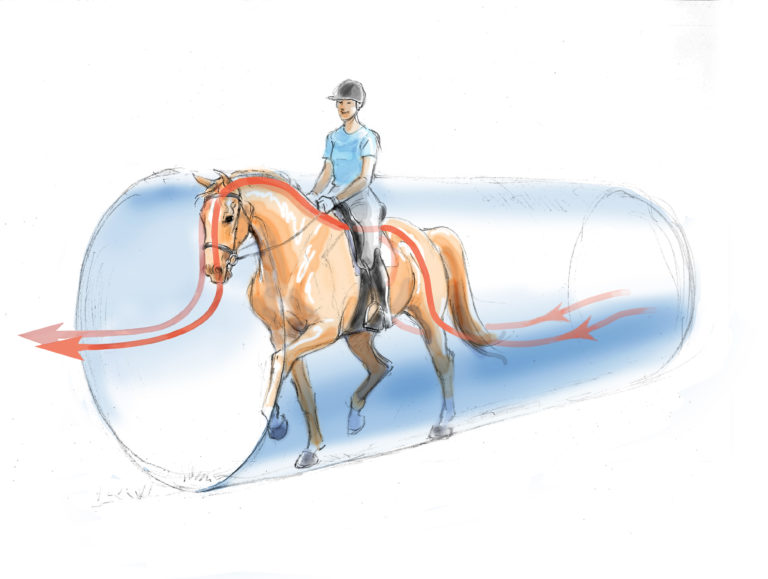
How Can I Successfully School on My Own?
I have been riding dressage for a long time but have always felt that I lack goal orientation, which is why I haven’t moved up the ladder but am stuck at the lower levels. I practice lower-level dressage movements regularly, not really having a system. Could you give me advice on how to come up with a short-term as well as a long-term training plan that will help me move on to more success with my riding? I only have access to a local trainer who focuses on hunter/jumper riders and doesn’t know a lot about dressage. I own two European Wambloods.
Daniela Hauser
Wilmington, North Carolina
Jessica van Eyck
Dressage is a sport of subtleties and intricacies, so working alone most of the time can make progression difficult. However, if you ride smart, you can make the most of your time in the saddle. The dressage pyramid (also called the Training Scale or Training Pyramid) can seem formidable, but it is really the best tool to help you structure your training in the short and long term. As you work your horse each day, take the time to focus on accomplishing one element of the training scale at a time—starting from the bottom and working your way up.
Begin your ride with straight lines and large circles. Try to first achieve rhythm, relaxation and connection each day before moving on. Once you have achieved these things, begin riding some movements, such as voltes, shoulder-in, half pass, etcetera, again focusing on achieving and maintaining the elements of the Training Scale. When you feel your horse is ready, begin to add more impulsion, straightness and collection to your work.
Every time you perform an exercise or a movement, take the time to ask yourself if you are still successfully following the Training Scale or if, perhaps, you need to go back and improve on one element before moving on. Your goal should be to achieve each element of the Training Scale more efficiently and to a greater degree each ride. Remember to challenge yourself and your horse to achieve a little more each and every ride. Pushing yourself out of your comfort zone is something a trainer helps you do in a lesson. When you ride alone, you have to motivate yourself to push the bar a little higher each ride. This can be tough to do, but it will pay off. Once you have completed your ride, it is important to reflect back on it and think about what was successful and what was not so successful. This will help you to come up with a goal and plan for your next ride. Keeping a journal of your thoughts, epiphanies, frustrations, goals, successes and failures can also be very helpful. Keep the journal in a place where you will remember to write in it after your ride while things are still fresh in your mind.
Having someone videotape your rides on a regular basis (whether you are primarily working alone or not) is an invaluable tool. To correctly bring a horse up the levels in dressage takes such a long time (when done correctly), which can often make you feel like you are just treading water. Having a video record will allow you to see and to track your progress over time. Watching yourself will also give you immediate feedback on how things are going. Very often what we think we are doing and what we are actually doing are two different things. So seeing what corrections you need to make with your own eyes can be extremely productive, especially when you do not have someone on the ground telling you what corrections you need to make and when to make them.
You can also use the USDF tests as markers for your progress. Plan a day every month to ride through a test. Have this test videotaped and honestly critique yourself. Then spend a month working on improving things that were not sufficient in your test, then ride it again the following month. Once you are satisfied with your test ride, move on to a more difficult test. If you have a friend who is also knowledgeable about dressage, make a date and take turns riding, videotaping each other and sharing constructive feedback.
I understand that accessing knowledgeable dressage trainers can be very difficult depending on where you live. Make it one of your goals to attend a dressage clinic with your horse at least once per year (ideally the same person every year for the sake of continuity). I often have my students send me video clips of themselves riding when they cannot ride with me for an extended period of time. I can then help give them direction and guidance as well as some appropriate exercises to help them improve. If you can establish a relationship with a dressage trainer, perhaps she would also watch some video clips and give you feedback to help keep you on track. If she has seen your horse in a clinic and had the opportunity to get to know how you ride, she could give you specifically tailored remote feedback, which would be wonderfully helpful for you.
Dressage is a lifetime sport, so stay focused, ride smart and keep working toward your goals, and you will achieve them. I hope that these tools will help to make your time in the saddle as productive as possible. And remember, perfect practice makes perfect!
Jessica van Eyck is a USDF bronze, silver and gold medalist, as well as a USDF Certified Instructor through Fourth Level and an “L” Education Program graduate with distinction. She owns Northshire Farm in Bondville, Vermont (northshirefarm.com).












